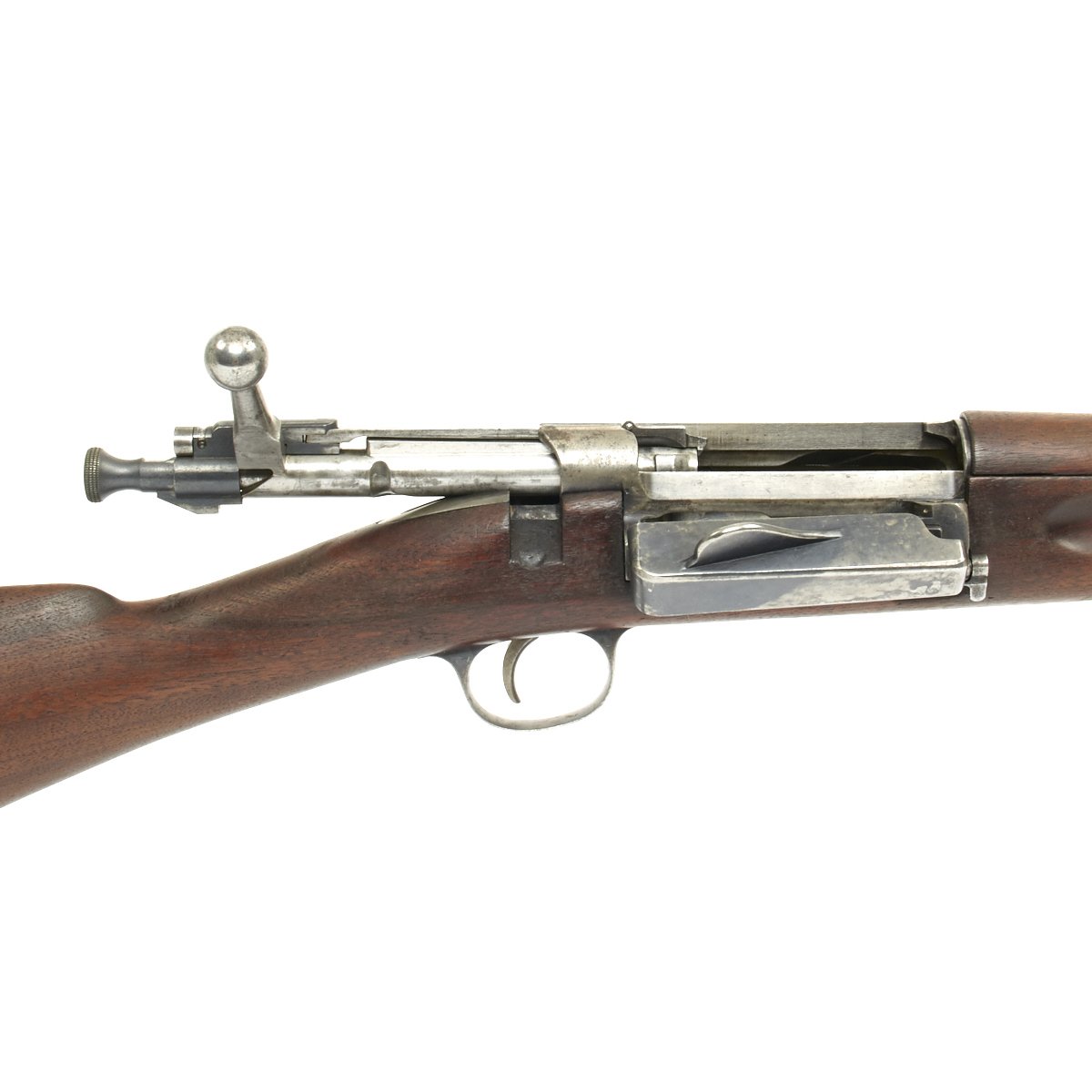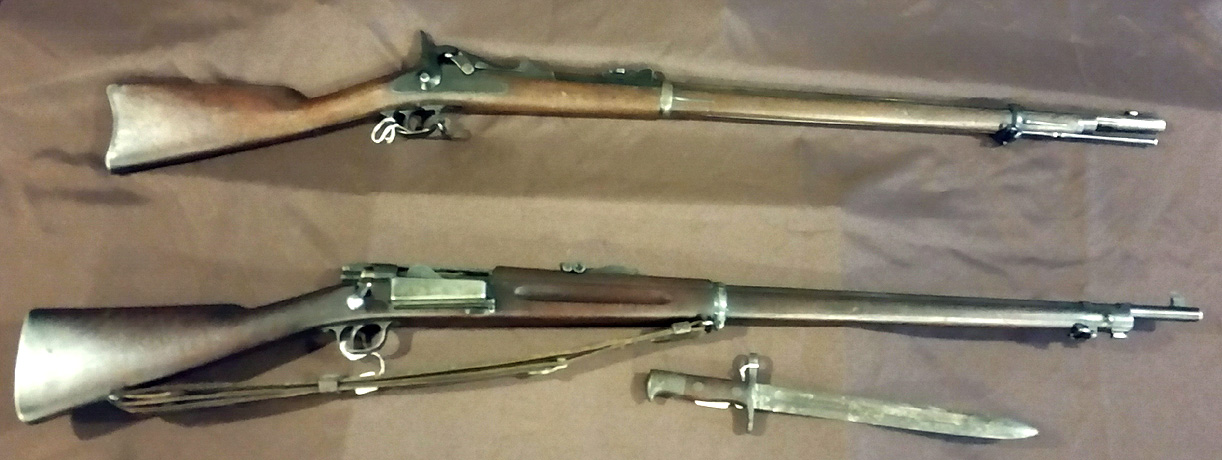
The test performed in Denmark revealed the need to lighten the rifle, as well as the possible benefits of a completely new action. The feedback given by the Danes was vital in the further development of the weapon. One of the early prototypes of the new rifle was sent to Denmark. In 1886, Denmark was on the verge of adopting a new rifle for its armed forces. Early models contained ten rounds and were fitted to modified versions of the Jarmann - though they could be adapted to any bolt action rifle. The principal feature of the capsule magazine was that instead of being a straight box protruding below the stock of the rifle, it wrapped around the bolt action. Together they developed the capsule magazine. Not satisfied with the tubular magazine of the Jarmann rifle and his earlier Krag-Petersson rifle (adopted by the Royal Norwegian Navy in 1876), he enlisted the help of master gunsmith Erik Jørgensen. Ole Krag, captain in the Norwegian Army and director of Kongsberg Våpenfabrikk (the government weapons factory), therefore continued the development of small arms, as he had since at least 1866. Several nations adopted small calibre repeating bolt action rifles during this decade.Īn exploded view of an early Krag-JørgensenĮven though Norway had adopted the repeating Jarmann rifle in 1884, it was soon clear that it was at best an interim weapon. During this decade smokeless powder came into general use, and the calibre of various service rifles diminished. The 1880s were an interesting period in the development of modern firearms.

Today, the Krag-Jørgensen is a popular rifle among collectors, and is valued by shooters for its smooth action. The next major US rifle also had a magazine-lock off. For others, the magazine's features likely aided adoption.

The relative complexity of manufacturing this magazine has been suggested as a reason why many countries did not adopt the Krag-Jørgensen.

However, the design was easy to "top off", and unlike most other top-loading magazines, the Krag-Jørgensen's magazine could be topped up without opening the rifle's bolt. While a similar claw type clip would be made that could allow the magazine to be loaded all at once, normal loading was one cartridge at a time. This presented both advantages and disadvantages compared with a top-loading "box" magazine, which were often fed using a " stripper clip". The cartridges were inserted through the side opening, and were pushed up, around, and into the action by a spring follower. While many other rifles of its era used an integral box magazine, the magazine of the Krag-Jørgensen was integral with the receiver (the part of the rifle that houses the operating parts), featuring an opening on the right hand side with a hinged cover. It was adopted as a standard arm by Denmark, the United States and Norway.Ī distinctive feature of the Krag-Jørgensen action was its magazine. The Krag-Jørgensen is a repeating bolt action rifle designed by the Norwegians Ole Herman Johannes Krag and Erik Jørgensen in the late 19th century. Closeup of the Krag-Jørgensen receiver and magazine door on a Norwegian M1912 Carbineģ.375 kg / 7.5 lb to 5.157 kg / 11.46 lb depending on modelĩ86 mm / 38.8 in to 1328 mm / 52.28 in depending on modelĥ20 mm / 20.5 in to 832 mm / 32.78 in depending on modelĥ80 m/s (1900 ft/s) to 870 m/s (2854 ft/s) depending on ammunition


 0 kommentar(er)
0 kommentar(er)
